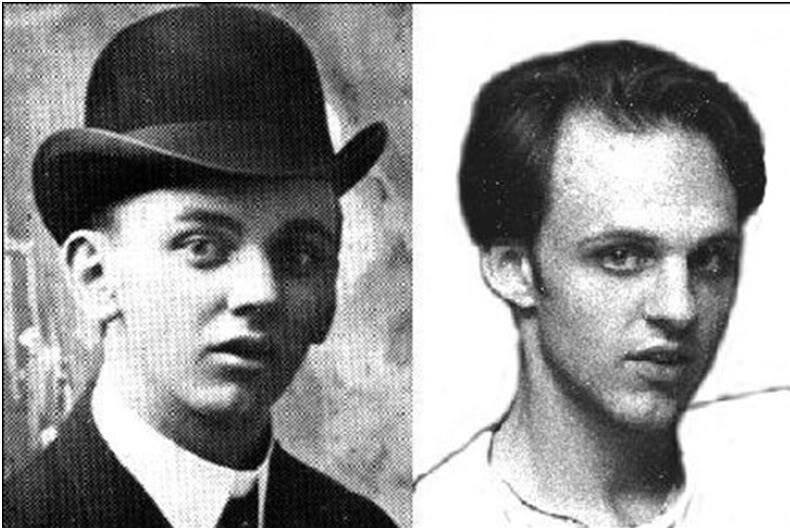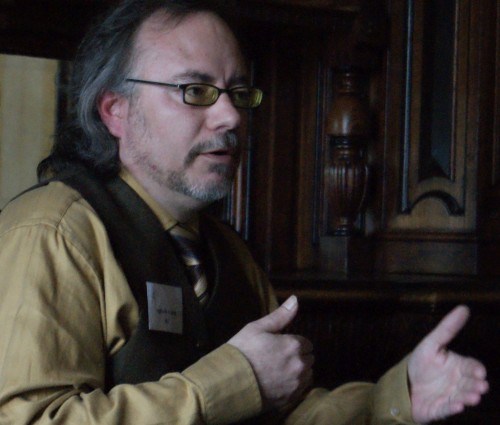Dr. Claire White’s research addresses the religious topic of reincarnation that, although perhaps more adhered to by human cultures across time and space than the belief that we have only one earthly life followed by eternal reward or punishment, has received little serious scientific investigation—especially from the question through which Dr. White addresses it. That question is not whether reincarnation (or any other religious belief) is true, but rather “Why do some people have that belief?” It is this type of psychological question that is the hallmark of the cognitive science of religion (CSR).
The long-held assumption, made historically by both scholars and laymen, has been that religious beliefs are created and instilled through cultural transmission and indoctrination. In the past few decades, however, the newly emergent field of CSR has taken that assumption to task with numerous empirical experiments. Contrary to this long-held assumption, research into a wide variety of religious beliefs by CSR has found that many of those beliefs are held by us because they tap into and appeal to our natural cognitive biases. These cognitive biases predispose us to believe in gods, an afterlife, a moral universe, and creationism. Even though each religion addresses these topics in (sometimes very!) different ways, the findings suggest that what binds this great variation together are these underlying intuitions.
Like any human endeavour, however, science sometimes includes missteps.
White’s research, in conjunction with my own and others’, calls into question a theoretical assumption held by many CSR scholars that the body plays a negligible role in beliefs about supernatural agents (see here, here and here). According to such scholars, supernatural agents are represented by believers as disembodied beings, devoid of any bodily properties. This applies to gods as well as the afterliving deceased. Once a human dies, these researchers tell us, the only part of this deceased individual we intuitively represent as continuing is her mind. We no longer represent her as embodied in any way, let alone in any way connected with her previous earthly body. In contradistinction to this view with regard to the latter, both White and myself argue that the body still plays a vital role in representations of the afterliving deceased, and that this bodily representation is sufficiently corporeal and similar enough to allow for recognition and identification as “the same again” as well as continued social interaction.
As White rightly states in her interview, if there were ever a case in which the afterliving deceased’s previous earthly body should play no role whatsoever in her representation, recognition and identity, then it should be in the context of reincarnation. It is believed that the new physical body of the reincarnated individual shares no causal history, in the scientific sense, with her previous body. It could vary in race, sex, and innumerable other ways. Yet White’s empirical findings demonstrate that when trying to determine whether a reincarnated individual is the same again, we intuitively look for and at distinctive physical clues. If it were indeed the case that humans intuitively represented the afterliving deceased as disembodied minds, then there would be no reason, let alone an intuitive bias, to gauge the reincarnated individual’s identity based on her bodily attributes. Yet we do.
The evidence produced by White vividly demonstrates this by the fact that one of the two most important features that one “implicitly” looks for and appeals to in order to recognize a reincarnated individual as the same again are distinctive physical characteristics. Since the individual’s new body shares no causal history—genetic or otherwise—with her previous body (again, in the scientific sense), there should be no implicit reason to expect there to be such specific physical clues of identity. Nevertheless, White’s evidence demonstrates that we still represent and appeal to physical clues in matters of recognizing a reincarnated individual as the same again.
White does not appeal to novel cognitive mechanisms to explain this phenomenon, as is vogue in CSR (and cognitive science as a whole). Instead White claims that this intuitive cognitive bias relies on the known mundane representational processes that we use every day to recognize those we encounter as the same again. We expect them to have a specific causal history which we implicitly track through both mental (i.e., autobiographical memories) and distinctive physical characteristics. Of course, the latter are far more easily tracked than the former (could you imagine how different our interactions would be if we had to establish every individual’s identity by first interrogating her about her memories?).
White is also to be commended for incorporating anthropological evidence in her research. This is something that should be done much more often in CSR. Too often, researchers produce results and theories in their laboratories that appear to share little in common with the religious practices they are attempting to illuminate empirically. They provide us with no bridge to get from their results and theory to religion writ large in human cultures. Even worse, sometimes their results and theories seem to fly in the face of religious beliefs and practices.
Again, take the claim that humans represent supernatural agents as disembodied. This is problematic in that supernatural agents (with very few exceptions) are starkly represented as embodied, not just in iconography but also in mythologies and religious texts, and in fact often with very specific and odd physical features. For instance, think about the pantheons of supernatural agents across such diverse cultures as in ancient Egypt, Greece, Scandinavia, India and China. How could the supernatural agents in these cultures have been represented, let alone carried out their specific mythical exploits, if we believed (intuitively or otherwise) that they were disembodied? Reconciling the laboratory phenomenon of dualism with religious beliefs and practices begins to appear impossible.
To overcome the complaints of its critics, CSR needs to follow White’s lead. Not only must we diligently carry out cross-cultural experiments in the laboratory, but we also need to consult and remain faithful to the anthropological record of religion as it is believed and practiced. If the two appear incompatible, it is our experiments and theories that must be rethought. It is not as though we in CSR can authoritatively tell the religious faithful that they are worshipping all wrong!



